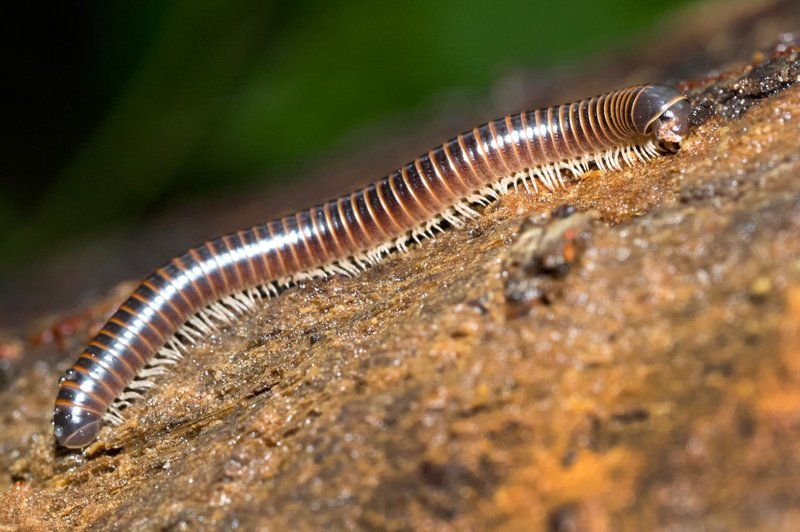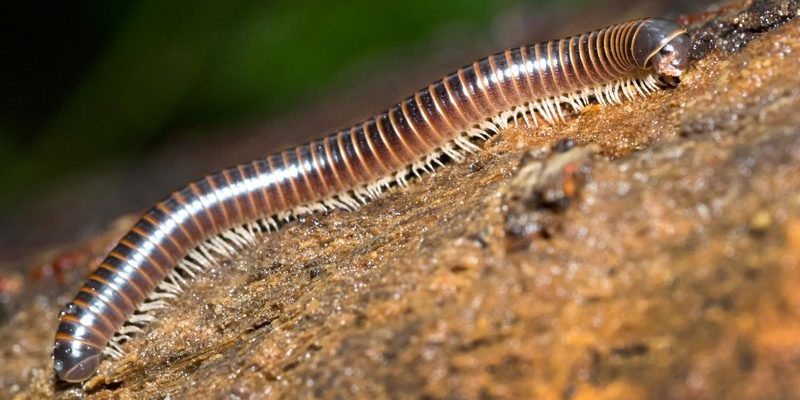
Velvet worms might not be on the tip of everyone’s tongue, but they’re worth talking about. With their soft, velvety bodies and unusual hunting methods, they stand apart from the more familiar centipedes and millipedes. In this blog, let’s take a closer look at each of these creatures, exploring how they differ and what makes them special. Grab your favorite drink, and let’s dive into the world of these intriguing invertebrates!
What Are Velvet Worms?
Velvet worms, or *Onychophora*, are like nature’s little oddballs. They’re soft-bodied creatures that live in damp, humid environments like leaf litter and under logs. Imagine a tiny, squishy caterpillar, but with a few extra legs. These creatures are often a rich blue or brown, covered in a fine layer of tiny hairs that give them their velvety appearance.
One of the coolest things about velvet worms is how they hunt. Instead of quickly pouncing on their prey like a spider or scaring it off with venom like a centipede, they have a unique method: they release a sticky slime to trap their food, which usually consists of insects. This hunting style is a great example of how evolution has shaped their survival strategies—talk about creative thinking!
Another interesting aspect is their reproduction. Velvet worms have a fascinating mating ritual where the male will often gift the female with a package of nutrients—kind of like bringing a bouquet of flowers, but in the form of a snack! This adds a touch of charm to their otherwise otherworldly existence.
Getting to Know Centipedes
Centipedes, belonging to the class *Chilopoda*, might evoke more fear than velvet worms. With their long, segmented bodies featuring numerous legs—often 30 or more—they’re often seen as the villains of the invertebrate world. And let’s be honest, they can be a little intimidating!
Despite their creepy appearance, centipedes play a crucial role in their ecosystems. They’re active hunters with a voracious appetite, feeding mainly on insects, spiders, and even small vertebrates. Their secret weapon is their venom; they can deliver a painful bite to immobilize their prey. Interestingly, not all centipede bites are harmful to humans, but it’s always best to keep a safe distance.
One of the most common types in North America is the house centipede. You might have spotted them scurrying across your wall during the night. Contrary to popular belief, they’re not out to get you; they help control household pests. So, while they may give you a fright, centipedes can also do you a favor!
Understanding Millipedes
Now, let’s move on to millipedes, the gentle giants of the arthropod family. Unlike their more aggressive cousins, centipedes, millipedes are usually harmless and tend to be more on the docile side. They have long, cylindrical bodies made up of many segments, each equipped with two pairs of legs—hence the name ‘millipede,’ which means “thousand feet,” even though they don’t actually have that many.
Millipedes are detritivores, which means they primarily feed on decaying plant material, helping recycle nutrients back into the soil. Think of them as nature’s clean-up crew, tidying up the forest floor. When threatened, many species can also secrete a defensive fluid that can be irritating, so they have their own defense mechanisms, too.
Interestingly, millipedes prefer moist environments, often found in leaf litter, soil, and other damp areas. They play a vital role in their ecosystems not just through their eating habits but also by contributing to soil health and structure.
Comparison of Physical Features
When comparing velvet worms, centipedes, and millipedes, the first thing to notice is how they look. Here’s a quick breakdown of their physical features:
| Feature | Velvet Worms | Centipedes | Millipedes |
|---|---|---|---|
| Body Shape | Soft, velvety, segmented | Long, slim, flexible | Long, cylindrical, rounded |
| Legs | 14–43 pairs | 1 pair per segment | 2 pairs per segment |
| Diet | Predatory (insects) | Predatory (insects, small animals) | Herbivorous (decaying plant matter) |
| Defensive Mechanism | Sticky slime | Venomous bite | Secretions that can irritate skin |
This table helps illustrate the key differences and similarities among these creatures, highlighting their unique adaptations and lifestyles.
Behavior and Habitat Differences
Behaviorally, velvet worms, centipedes, and millipedes have some intriguing differences influenced by their habitats. Velvet worms thrive in humid, forested areas. They like to stay hidden during the day and come out at night when it’s cooler and their prey is more active. Think of them as night owls—quiet stalkers of the damp darkness.
Centipedes, on the other hand, are much more aggressive hunters, preferring to roam their territory looking for food. They’re often found in moist soil or under rocks and logs. This active lifestyle means they’re usually on the move, ready to pounce on unsuspecting prey.
Millipedes tend to be slower and more laid-back. They can often be found curled up in leaf litter during the day, emerging at night to forage for food. Their docile nature makes them less prone to confrontation, choosing to blend into their environment instead of seeking out trouble.
Why Understanding These Creatures Matters
So, why should we care about velvet worms, centipedes, and millipedes? Well, for starters, they’re vital players in their ecosystems. By understanding their roles, we can appreciate how they contribute to soil health, pest control, and overall biodiversity. Plus, studying these creatures can shed light on evolutionary biology and environmental changes.
Moreover, knowing the differences among them can help us coexist better. For example, while centipedes might freak you out with their fast movements and venomous bite, they help keep pest populations in check. Millipedes, while tons more friendly, still play a crucial role in recycling nutrients.
Let’s not forget that these creatures remind us of the incredible diversity of life on our planet. By learning about them, we foster a greater appreciation for the world around us, which can inspire conservation efforts and a better relationship with nature.
In conclusion, velvet worms, centipedes, and millipedes all bring something unique to the table. Each creature has its own fascinating features and behaviors, making them incredible subjects of study and appreciation. So, the next time you encounter one in your garden or while hiking, take a moment to observe and appreciate the roles they play in our ecosystem—it’s a valuable lesson in the natural world!

